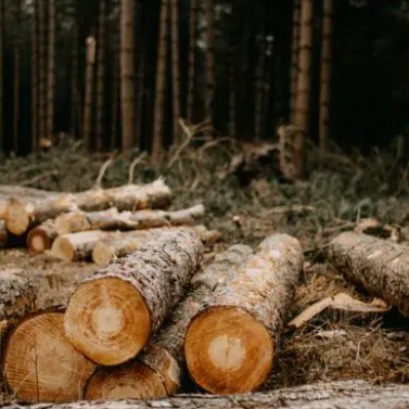
Distinguished pieces of sawn teak wood
Teak wood (Tectona grandis L.f.) is native to Southeast Asia, India, Cambodia, Laos and Vietnam. It also has other areas of provenance where it has been widely planted: tropical regions of West Africa and tropical Central America.
It is a species that stands out for its magnificent characteristics of natural durability, in addition to having a good dimensional stability. Teak wood has an antiseptic resin that makes it resistant to the attack of various organisms, such as termites or fungi.
To its good stability, it must add its high resistance to water, cracking or rupture, because it has a natural oil that makes it impermeable, which makes it a widely used wood in shipbuilding. It is also an optimal wood for outdoor, being able to adapt to extreme weather conditions.
The teak wood is intense golden brown, normally, but it has a wide range that varies from reddish to very pale tones. It also admits treatments or paintings to change its color without losing its appearance
These properties make teak wood one of the best known tropical woods on the market and, sometimes, that is reflected in its price. All this, added to its good outdoor properties and its durability makes it worthwhile for certain products, the investment in using teak wood.
One of the uses of teak wood is directly sawn, but also as sheet metal, panels, carts, wheels, carpentry and joinery, manufacture of canoes and light boats, furniture and interior finishes.
Sawn teak wood can be used directly in the manufacture of distinguished doors or tables or as a decorative element, for its natural beauty.

IT MAY INTEREST YOU
 Unprecedented Forest Crisis: with 8.1 million hectares destroyed, the goal of zero deforestation is in danger
Unprecedented Forest Crisis: with 8.1 million hectares destroyed, the goal of zero deforestation is in danger
A new report warns that the planet is experiencing an unprecedented forest crisis. In 2�24, forests suffered large-scale destruction with a permanent loss of almost 8.1 million hectares worldwide.
 Missions | The traditional National Wood Festival in November celebrates four decades of a popular gathering in San Vicente
Missions | The traditional National Wood Festival in November celebrates four decades of a popular gathering in San Vicente
The official announcement of the 4�th San Vicente National Wood Festival was made this Tuesday by the governor of Misiones, Hugo Passalacqua. The cultural and festive event will take place from November 5 to 9 at the Verón Gallardo Sports Center in San Vicente, Misiones, to celebrate four decades of history. The San Vicente National Wood Festival is a popular meeting point for the agroforestry and commercial community in the Alto Uruguay area, and is an opportunity for the forestry-industrial chain to expose its development and services. The festival includes cultural, artistic and economic promotion activities.
 Currents | Las Marías invests 8 million dollars to modernize its sawmill in Virasoro
Currents | Las Marías invests 8 million dollars to modernize its sawmill in Virasoro
The traditional company from Corrientes is moving forward with a million-dollar investment to completely renew its forestry-industrial plant. The new European line, fully automated, will increase productive performance and position the sawmill among the most modern in the country.





















